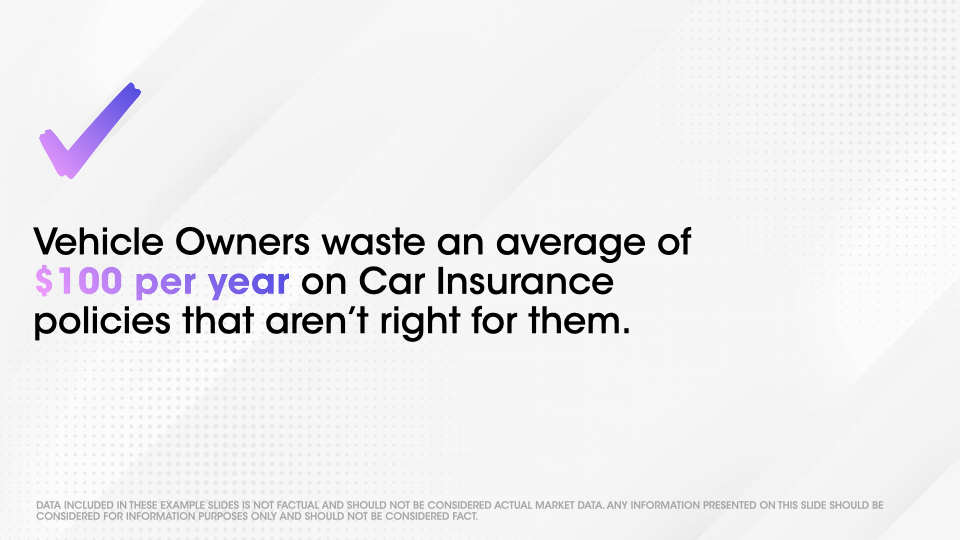The Problem Slide: How to Make Your Problem Statement Stick

This is part four of "The Ultimate Pitch Deck Guide for Startups," a fundraising guide made in partnership with DECKO, a leading pitch deck development company that’s helped ~180 startups raise over $100M from investors.
____________________
Now that we’ve finished with the Strategy portion of our guide, it’s time to get into the tactical details that elevate each of the commonly used slides within your pitch deck.
Today, we’re tackling the Problem slide.
Your Problem slide is one of the most important slides in your pitch deck because it paints the backdrop for the value proposition of your product or service. This slide, often considered the foundation of your pitch, sets the stage for why potential customers would eagerly embrace what you have to offer. With the right balance of clarity and persuasion, your Problem slide can transform from a mere introduction to a captivating revelation, propelling your pitch deck toward its ultimate goal of securing funding for your company.
In this chapter of “The Ultimate Pitch Deck Guide for Startups,” we'll delve into key aspects that enable you to communicate the significance of the challenge you're addressing and why it matters. From identifying whether a conventional "Problem" slide is fitting for your endeavor to quantifying the issue your customers face, we'll unravel the layers that underpin this vital piece of your pitch deck puzzle.
We’ll also share examples of good slides vs bad slides so you can see the tactics we’re sharing in action.
Now, let’s dive in.
Do you really need a problem slide?
Every pitch deck template you may have found online before this has told you that you need a problem slide. But pause for a moment: What problem did Twitter actually solve with its Tweets? What issue is a venture fund addressing when investing in startups? What problem is a Real Estate fund solving with a vacant storefront unit on a street that has a high amount of foot traffic?
Interestingly, not all businesses exist purely to solve problems. Some introduce new behaviors (like Twitter's microblogging), while others leverage market opportunities (like a busy street storefront).
On the flip side, shoehorning your business into the existing pitch deck templates to force a “Problem” slide may only serve to confuse potential investors rather than excite them.
So, the first question to ask yourself is “Am I even solving a problem?” If you can answer that question with a “Yes,” then the rest of this Chapter will be helpful for you. If not, you can pause here and come back next week when we talk about your Market slide.
Quantify the problem your customers face
Every Problem has a cost to customers. Sometimes that cost is monetary, other times it is Time Wasted, Downside Risk, or one of many other ways to quantify the Problem.
In the example slide, we follow a Car Insurance startup that helps people compare rates to find the best policy for them. We share an example of the wrong way to quantify the problem and the right way.
The first thing investors want to know is “is this actually a big deal?” The answer, in this case, is YES! Consumers are wasting a ton of money on the wrong rates. Once an investor understands this, they will understand why a customer would be willing to use an online platform to compare rates.
If you can’t put your Problem into numbers, use social proof like quotes from potential customers to show that the problem really exists.
So, try your best to gain a deep understanding of exactly how much the Problem you are solving costs to your customer. From there, include that cost in your pitch deck so investors can understand what you are saving customers from.
Identify what the alternatives are
Problems don’t exist in a vacuum. Customers are using alternatives to your solution in order to get by. Often times, it is these alternatives and not the Problem you are solving itself that is costing your customers.
Alternatives are not always your competitors. In the example of the Car Insurance platform, the alternative is actually just purchasing a policy from the first broker who reaches out to them. In buying this policy, they are wasting money because they are unable to compare rates.
When alternatives are your competitors, it is important to note what key parts of a competitor’s offering is missing that make the experience worse or more costly for Customers.
Why hasn't a solution been created yet?
“Why hasn’t anyone else thought of this?” Well, they probably have thought about it but could not develop the solution.
Technology, regulation, and consumer preferences can evolve your company to exist at the right place and the right time to be successful. Identify what bottlenecks have existed in the past that made it impossible for other companies to create your solution in the past.
In this hypothetical example, we can see the bottleneck is that nobody had access to up-to-date insurance policy details. Since this company has that ability (we will expand on this in the Solution chapter coming out in two weeks), they are able to create a product no other company has been able to before.
Identifying market bottlenecks help investors understand why your solution is revolutionary and helps investors understand where your competitive moat will come from.
BONUS: Avoid “Circular Problems”
Another way to think about Circular Problems is “The Problem is my solution doesn’t exist.” This also ties into the process by which you actually develop your product. Did you speak to potential customers first or did you just build something you think customers are going to like?
Fundamentally, you want to make sure you are not a solution searching for a problem but rather have built a solution for a specific problem that customers have.
If you did build around customer preferences, great! Now, we have to make sure that is clear in your Problem statement.
Back to the example of the Car Insurance platform. A bad Problem statement would be:
“There is no online platform for Vehicle Owners to find and compare Car Insurance policies.”
This statement doesn’t tell me why a platform to find and compare policies needs to exist. Do consumers have a problem comparing rates? Are they frustrated with existing alternatives/ solutions? Is it costing them?
Instead, use a combination of the tips we provided in this chapter to create a compelling story that provides clear proof that:
- The Problem you are solving is real
- Customers are willing to pay for a solution
____________________
Remember, your Problem slide is more than just a slide; it's a strategic narrative that captivates investors and stakeholders alike. By scrutinizing the problem you're solving, quantifying its impact on customers, identifying existing alternatives, and uncovering the reasons behind the lack of prior solutions, you've charted a course to forge a profound connection with your audience.
Now that you have a clear understanding of what goes into a Problem slide, you’re ready to continue on to the next chapter in “The Ultimate Pitch Deck Guide for Startups.”












